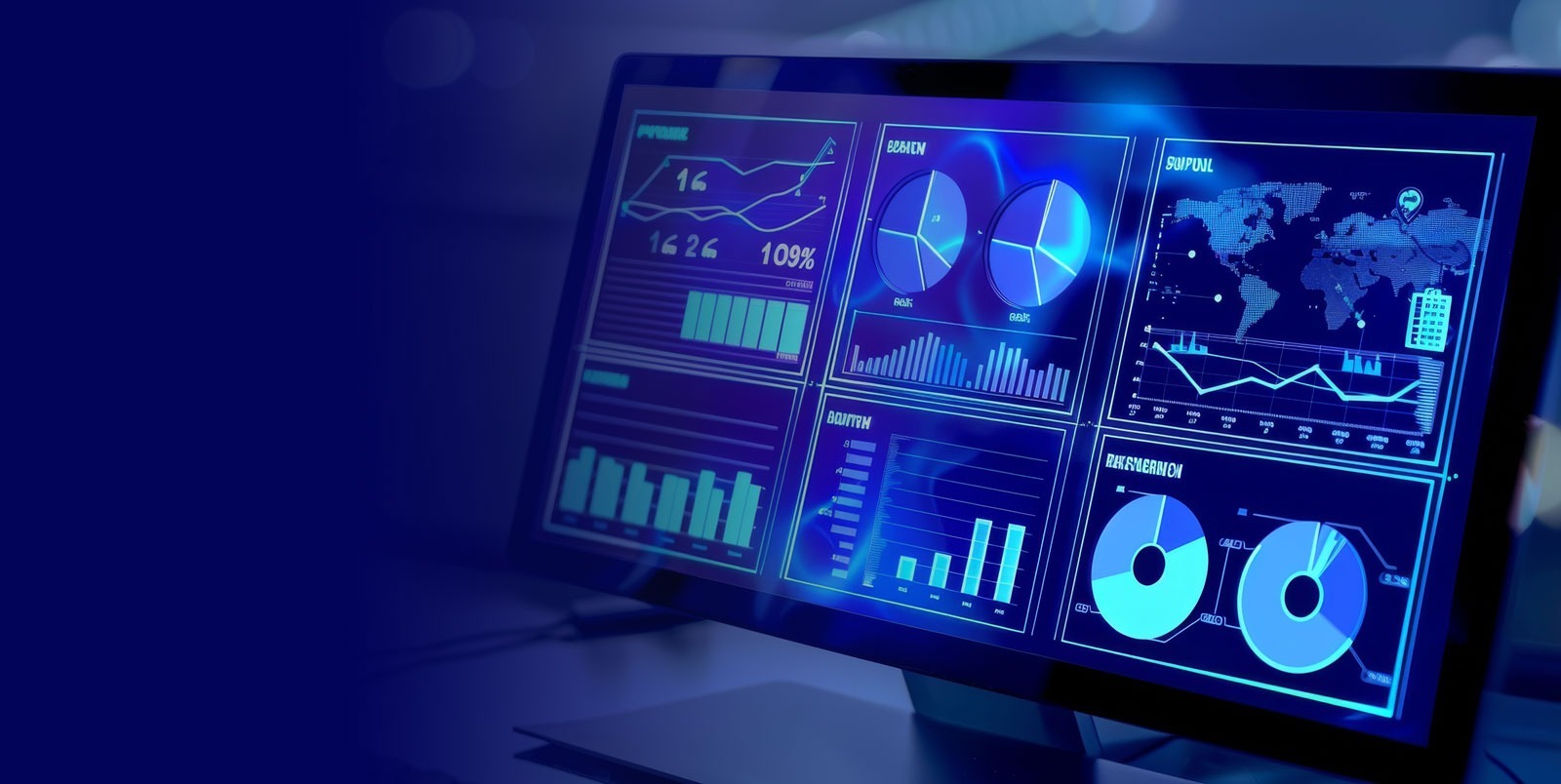Demystifying Data Science Process

Data science stands at the intersection of statistical analysis, algorithmic development, and technology, transforming raw data into actionable insights that drive strategic decision-making. This transformation is not incidental but the result of a structured sequence of steps known as the data science process. Each stage in this process, from data collection to model deployment, is crucial in ensuring that the insights generated are both accurate and applicable to real-world problems.
For businesses, grasping the nuances of the data science process is crucial, as it underpins the analytical capabilities that can lead to competitive advantage in today’s data-driven economy. This blog provides a comprehensive data science process overview, examining each phase meticulously. We will explore how data professionals use various methodologies and tools to handle, analyze, and interpret data, ensuring the integrity and relevance of their findings.
As the demand for data-driven decision-making increases across industries, understanding this process becomes essential not only for data scientists but also for those who rely on data insights to make informed decisions. This guide aims to clarify the data science process flow, the data science process model, and the practical applications of these in business contexts, ensuring a clear understanding of how data moves from collection to valuable insights.
What is the Data Science Process?
So, what is the data science process? The data science process refers to a series of systematic steps that data scientists and analysts follow to extract useful information from data. This process combines programming, statistical understanding, and domain knowledge to solve complex problems and make data-driven decisions. The data science process model is often tailored to fit specific project needs but typically follows a structured flow that ensures efficiency and accuracy in results.
Data Science Process Flow
Mentioned below are the data science process steps:
Defining the Problem
Every data science process overview begins with understanding and defining the problem you’re trying to solve. This could be predicting customer churn, optimizing logistics, or identifying key market trends. A clear problem definition is crucial as it guides the selection of data and the methods used in the analysis.
Data Collection
The next stage involves collecting the necessary data. This data could come from internal databases, third-party data sources, public datasets, and more. Effective data collection ensures a solid foundation for the subsequent steps in the data science process.
Data Cleaning and Preparation
Often considered one of the most time-consuming stages of the data science process, data cleaning involves removing inaccuracies and inconsistencies from data. This may include handling missing values, correcting errors, and standardizing data formats, which are crucial to making the data suitable for analysis.
Data Exploration and Analysis
Data exploration involves using statistical methods and visualization tools to understand patterns and anomalies in the data. This step is vital for discovering the data’s underlying structures and forming hypotheses for more detailed analysis.
Feature Engineering
Feature engineering is about creating or modifying new variables to enhance the model’s performance. This step often involves domain knowledge to identify which features will likely be most relevant to the problem at hand.
Model Building
Here, data scientists choose and apply various modeling techniques. The choice depends on the problem type (e.g., classification, regression) and the data characteristics. This stage may involve training multiple models to compare their performance.
Model Evaluation and Tuning
Once built, models must be evaluated using relevant metrics (like accuracy, precision, and recall). Models might be tuned and refined to improve performance, often involving adjustments in the model parameters or choosing a completely different modeling approach.
Deployment
The best-performing model is then deployed to make real-time predictions or to perform the required task. Deployment could mean integrating the model into existing software or making it work on live data.
Monitoring and Maintenance
Post-deployment, it’s essential to monitor the model’s performance over time. Changes in data or in the modeled relationship might require updates or adjustments to the model.
Data Processing Tools in Data Science
The effectiveness of the data science process heavily relies on the tools used. Some of the popular data processing tools in data science include:
- Python and R: For scripting and statistical analysis.
- SQL: For database management.
- Tableau and PowerBI: For data visualization.
- Apache Spark: For handling big data.
- TensorFlow and Scikit-Learn: For machine learning.
Stages of Data Science Process
The data science process is a systematic approach to extracting insights and information from raw data. This process is critical for developing effective data-driven strategies and consists of several key stages of the data science process:
1. Business Understanding
This initial stage focuses on understanding a project’s business context and objectives. It involves close collaboration between data scientists and business stakeholders to define the problem clearly and determine how the project’s outcome will impact business decisions. This stage sets the direction for all subsequent actions in the data science project.
2. Data Acquisition and Collection
Data acquisition involves identifying and obtaining relevant datasets to help solve the defined problem. This stage may involve collecting new data through experiments or surveys, extracting data from existing databases, or acquiring data from third-party sources. Ensuring the data’s relevance, quality, and quantity is crucial as it forms the foundation for all further analysis.
3. Data Cleaning and Preparation
The most time-consuming stage, data cleaning, often involves preparing the raw data for analysis. This includes handling missing values, removing duplicate entries, correcting inconsistencies, and converting data into usable formats. The aim is to standardize and cleanse the data to prevent errors in the analysis phase.
4. Data Exploration/EDA
Exploratory Data Analysis (EDA) makes sense of the data through summary statistics and visualizations. This stage helps uncover patterns, anomalies, and correlations that can inform model choices and hypotheses. It is a critical step for understanding the distribution and relationships of the data elements.
5. Feature Engineering
Feature engineering uses domain knowledge to create new features from the raw data that will make the machine learning algorithms work. This might involve aggregating data, decomposing time series, or transforming variables to expose patterns to better modeling tools.
6. Predictive Modeling
During this stage, various machine learning algorithms are applied to the prepared data to build models. Data scientists select the model based on the problem type (classification, regression, clustering, etc.) and the dataset’s characteristics. This stage often involves experimenting with different algorithms and tuning parameters to find the best-performing model.
7. Model Evaluation
After model development, it is critically evaluated against a test set to gauge its performance based on accuracy, precision, recall, F1-score, ROC curve, and other relevant metrics. Evaluation might lead back to tuning the model further or even revisiting earlier stages like data cleaning or feature engineering.
8. Model Deployment
Once a model is chosen and refined, it can be deployed into a production environment, where it starts making predictions or informing decisions based on new data. Deployment must also include setting up monitoring tools to monitor the model’s performance and quickly identify any degradation or failures as it interacts with real-world data.
9. Model Monitoring and Updating
The final stage involves ongoing monitoring and maintenance of the deployed model. This includes periodic checks to ensure the model remains effective and updates as new data comes in or when external factors affect the data shift. Continuous monitoring is essential to adapting and evolving models to maintain their relevance over time.
Current Trends in Data Science
Data science continually evolves and is influenced by technological advancements, emerging markets, and industry needs. Here are some of the latest trends:
Automated Machine Learning (AutoML)
AutoML is becoming increasingly popular for automating applying machine learning models to real-world problems. This trend helps companies accelerate their data science projects by automatically selecting the best models and parameters, making data science more accessible to non-experts.
AI Ethics and Fairness
As AI systems play more significant roles in decision-making, ethical considerations and fairness in data science models have gained attention. Data scientists are now tasked with designing models that are not only effective but also unbiased and transparent.
Data Fabric Technology
Data fabric technology provides a consolidated layer of data and integration processes across various platforms. This trend helps businesses manage their data seamlessly, regardless of where it resides, enhancing data accessibility and quality across organizations.
Quantum Computing
Quantum computing has the potential to revolutionize data processing by solving complex problems much faster than traditional computers. Although still experimental, its integration with data science could massively impact computational capabilities.
Ethical Considerations in Data Science
Data science is not just about algorithms and data processing; it’s also about ensuring the ethical use of data. Ethical considerations in data science include:
Privacy
Ensuring the privacy of individuals whose data is being analyzed is paramount. Data scientists must adhere to legal standards and ethical norms to protect data privacy, including the secure handling, storage, and sharing of personal information.
Bias and Fairness
Models can inadvertently become biased, reflecting or amplifying existing prejudices in data. Data scientists must employ methods that detect and mitigate biases to ensure that models perform fairly across different groups.
Transparency
There’s a growing demand for transparency in AI and data science processes. Clear documentation of data sources, model decisions, and methodologies is essential for understanding and accountability of outcomes.
The Future of Data Science
Looking ahead, the data science field is set to expand in scope and importance. Here’s what we might expect:
Increased Integration of AI with IoT
The Internet of Things (IoT) generates vast amounts of data. Integrating AI will help make this data actionable, transforming how industries like manufacturing, healthcare, and smart cities operate.
More Sophisticated Models
As computational power increases and algorithms evolve, we can anticipate more sophisticated data science models that can handle more complex data and deliver more nuanced insights.
Greater Emphasis on Operationalizing AI
Turning AI innovations into practical applications will be a key focus. This means more efforts towards embedding AI into everyday business processes and workflows, making AI a core component of business strategy.
Cross-disciplinary Data Science Teams
The complexity of the problems being tackled will necessitate cross-disciplinary teams that bring together expertise from different fields, such as ethics, engineering, and domain-specific knowledge, to build holistic data science solutions.
BuzzyBrains’s Data Science Process
At BuzzyBrains, we pride ourselves on being at the forefront of the data science revolution. Our approach to the data science process is rooted in a deep understanding of the business challenges faced by our clients. We start by defining the problem in close collaboration with our clients, ensuring that every data analysis or model we build perfectly aligns with their business objectives.
As one of the top data analytics companies in India, our team excels in handling and processing large volumes of data with the industry’s latest and most efficient tools. Whether through sophisticated algorithms or innovative modeling techniques, we ensure that our solutions are not just state-of-the-art but also practical and actionable. BuzzyBrains is more than just a service provider; we are your data science partners committed to turning your raw data into valuable insights that drive your business forward.
Conclusion
The data science process is a dynamic and iterative journey that requires a fine blend of skills, tools, and methodologies. By understanding each phase of the data science process model and applying it effectively, businesses can unlock the full potential of their data and gain a significant competitive edge in their respective industries.

